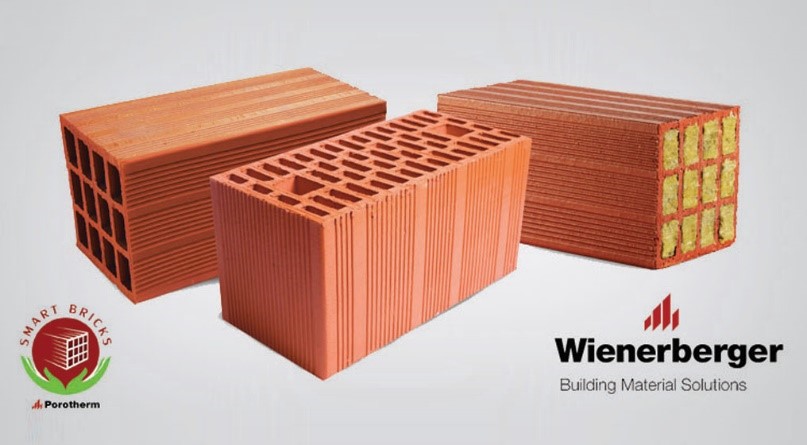Adapting the old methods’ in future Construction!
For the past decade, sustainable building has been a buzzword for the construction industry. The idea of sustainable building includes and assimilates a variety of different strategies during the design, old methods of construction, and operation phases of the building future construction. And, the use of green building materials signifies one imperative strategy in the design of a building.
Green building materials offer explicit benefits to the building owner and its inhabitants. Among all, the most significant benefits are listed below:
- Improved occupant health and productivity
- Energy conservation
- Lower costs associated with changing space configurations
- Greater design flexibility
- Reduced maintenance/replacement costs over the life of the building
You have to believe, that global building and construction activities consume nearly 3 billion tons of raw materials every single year which is equivalent to 40% of total global use (Source: Roodman and Lenssen, 1995). Hence, using green building materials is crucial as these promote conservation of the fast-diminishing non-renewable resources globally.
Today, several builders and property owners are exploiting earth-friendly materials and construction techniques in their building projects. Appraisers must become familiar with these innovative types of materials, hence we put together 10 such green building materials that will play a vital role in continuing construction whilst supporting our planet for a sustainable future.
Top Green Building Materials Of 2020
1. Adobe

The simplest of green building materials, ‘Adobe’ is nothing but soaked earth. Normally it’s a humble mixture of clay and sand and sometimes straw is also added. Also, to provide additional weather resistance cement is added to the mixture. Further, they are shaped into rectangular bricks/blocks which are used to make walls or partitions. Benefits of adobe include energy efficiency and protection from both weather extremes and fire; however, it doesn’t insulate very well.
2. Cob

One of the oldest methods of building with earth and straw or other fibers. The basics of this building material are very similar to adobe; it includes a basic mix of clay and sand, but typically has a higher percentage of long straw fibers mixed in. Here, instead of creating uniform bricks/blocks to build with, cob is applied as non-uniform clumps by hand in large gobs (or cobs). Cob has lots of beneficial properties which lend itself to a comfortable home, but like adobe, it lacks insulation.
3. Bamboo

Owing to its amazing rate of growth, bamboo is considered one of the most sustainable building materials of 2020. You will be surprised to know that bamboo grows faster than it is harvested. It is incredibly strong, in fact, twice as strong as concrete and slightly stronger than steel. This green building material can be used for both structural and finishing applications.
4. Earthbag

The earthbag construction technique can be defined as construction that uses locally available soil in combination with woven bags, which are filled (with earth or sand) and stacked to form an efficient building structure. The fill material can be earth from the site, sand, or another material like crushed volcanic rock or rice hulls. Stacking earthbags is just one part, further, the bags are covered on the exterior with plaster, adobe, or lightweight concrete.
5. Poured Earth

Very similar to concrete, but instead of the standard sand and gravel aggregate, the mixture uses native soil. And just like concrete, the material is mixed and poured into forms. Poured earth is a very strong and weather-resistant material. Insulation can be inserted into the forms during pouring, which provides for an energy-efficient building structure.
6. Rammed Earth

As a building material, this option is tough, cheap, and Green. Rammed earth is a mixture of earth, clay, and water that is crammed into forms. Conventionally this was done by hand, but current rammed earth construction is categorized by the use of heavy machinery, which is faster and more effective at compressing the material. Out of the several benefits, the main lead of using this material is its low cost.
7. Cordwood

Cordwood’s old methods of construction load up short, round lengths of wood into a wall. Using what would normally be kept aside for firewood, cordwood looks like a stack of wood you’d have behind your fireplace with the ends of the logs exposed. The cordwood is held together with mortar, creating a wall with both high insulation and high thermal mass.
8. Strawbale

The thick walls of a straw-bale building are becoming increasingly popular in the world of green building materials. Bales of straw from the harvesting of wheat, oats, barley, rice, rye, or flax are used as the primary building blocks. Essentially, there are 2 types of strawbale old methods of construction: load-bearing and non-load bearing.
9. Earthship

Here, earth-filled tires are set into the ground, this is a basic form of rammed earth in which waste tires become the form into which dirt is packed. Homes built using Earthship incorporate the passive solar rewards of berming with the use of recycled materials (commonly, old automobile tires) to create an efficient home. These homes heat and cool themselves on their own and do not consume any fossil fuels.
10. Clay Bricks

There are several advantages of clay for which it can be used in architecture. One of the main is the fact that Clay as a building material is ideal for tropical conditions in our subcontinent. Other than these natural clay – of which terracotta is made, is the most flexible form of earth. It is essentially the least resisting material. Clay is the oldest known versatile building material which has lasted for centuries sustaining its value and utility, it is the most plastic and workable material as it takes shapes of a toy to a material used for making high-rise buildings. Clay, when fired, leads to a porous structure that is filled with air when dry thus providing the best of the insulation properties largely useful to regulate the temperature (keeping cool in summers and warm in winters).
In The End …
We need to realize that the world doesn’t belong to us – it belongs to someone who is yet to come. To ensure our descendants reside in a world worth living in, we need to make proper use of sustainable resources. Let’s pledge to minimize the suffering of those unfortunate enough to be born in the apocalyptic harsh environment that we’ve spent so long stoking. Which of these materials do you think will have the greatest impact in the future? Do drop us a comment!
Until next time, let’s keep it green!








